The Best Fluffy Pancakes recipe you will fall in love with. Full of tips and tricks to help you make the best pancakes.
Across America, not all suburbs offer the quiet charm or upward mobility often associated with life beyond the city limits. Some communities grapple daily with high crime, economic stagnation, decaying infrastructure, and systemic neglect. Though rich in culture and resilience, these neighborhoods face challenges that often go unseen or unaddressed. This list sheds light on 40 of the country’s least desirable suburbs and neighborhoods—places where hardship is common, but hope, resistance, and community spirit endure in powerful, often overlooked ways.
#40: South Side – Dallas, TX
You’d never guess from the skyline views that Dallas’s South Side holds so much pain. This area, rich in cultural heritage, has long been sidelined in funding and attention. Crime lingers, especially in neglected public housing zones.

Schools battle overcrowding and outdated materials. Youth programs come and go with election cycles. Still, beneath the wear are fire—spoken word nights, street artists, and generational residents who refuse to give up. The South Side isn’t broken. It’s unfinished, underloved, and underserved.
#39: South Side – Oklahoma City, OK
There’s a quiet erosion happening on Oklahoma City’s South Side. Infrastructure fades: potholes deepen, streetlights flicker, and sidewalks crumble. While it doesn’t suffer extreme crime levels, the area is plagued by job insecurity, low wages, and a lack of opportunity.
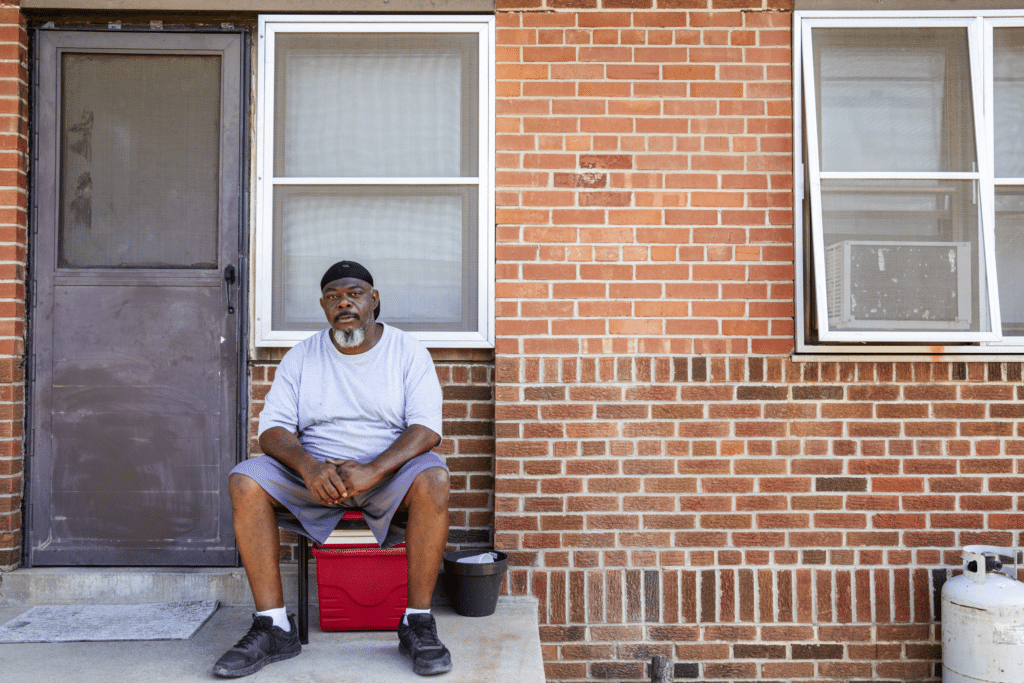
Immigrant families—predominantly Latino—make up much of the population and face systemic language, legal, and access barriers. The housing stock is aging and often overcrowded. Yet there’s warmth here: panaderías, street soccer games, and block-wide family barbecues.
#38: North Side – Kansas City, MO
A tale of two cities lives within Kansas City’s boundaries—and the North Side often draws the short straw. Violence flares up frequently, and police-community relations are fraught. Grocery stores are rare; liquor stores aren’t.

Many homes sit in disrepair, passed down generationally without means for upkeep. The schools struggle, hemorrhaging teachers and funding. But the North Side isn’t just decay—it’s defiance. Garden plots sprout on vacant lots. Juneteenth parades thread through the neighborhoods.
ADVERTISEMENT
#37: South Side – Columbus, OH
Editorial content
Not far from the city’s booming downtown, Columbus’s South Side limps along quietly. Factories that once employed thousands are now graffiti-tagged shells. Opioid addiction has hollowed out families, and property crime eats away at community morale.
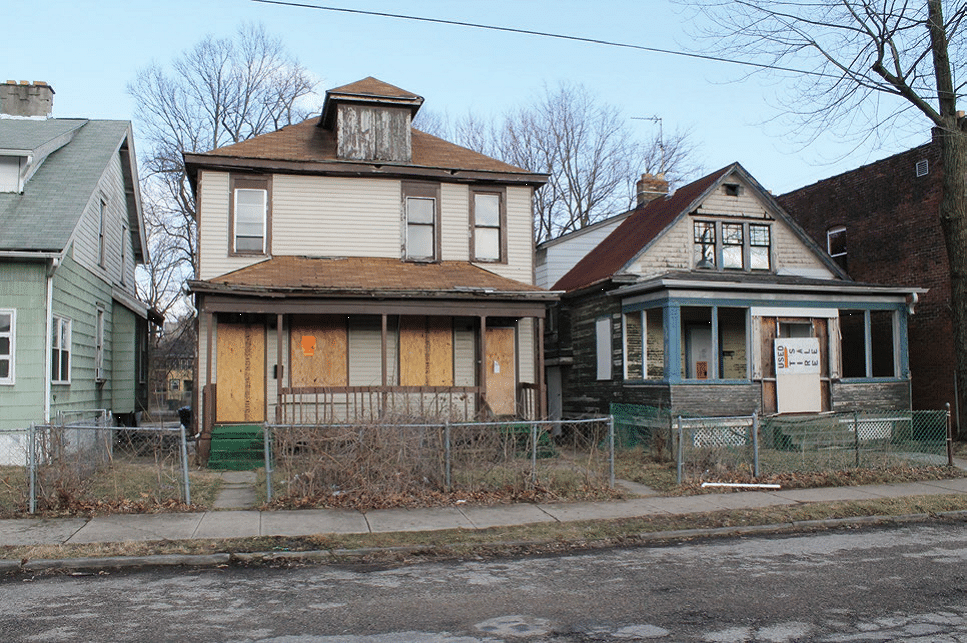
While nonprofits try to plug gaps in services, residents face long waits for housing aid, food assistance, and healthcare. The area’s diversity—refugees, blue-collar workers, aging locals—is its greatest strength, but also means many needs go unmet.
#36: East End – Houston, TX
Gentrification creeps like fog across the East End. Once a predominantly Hispanic working-class hub, the area now contends with rising rents, shrinking community resources, and tensions between old and new.
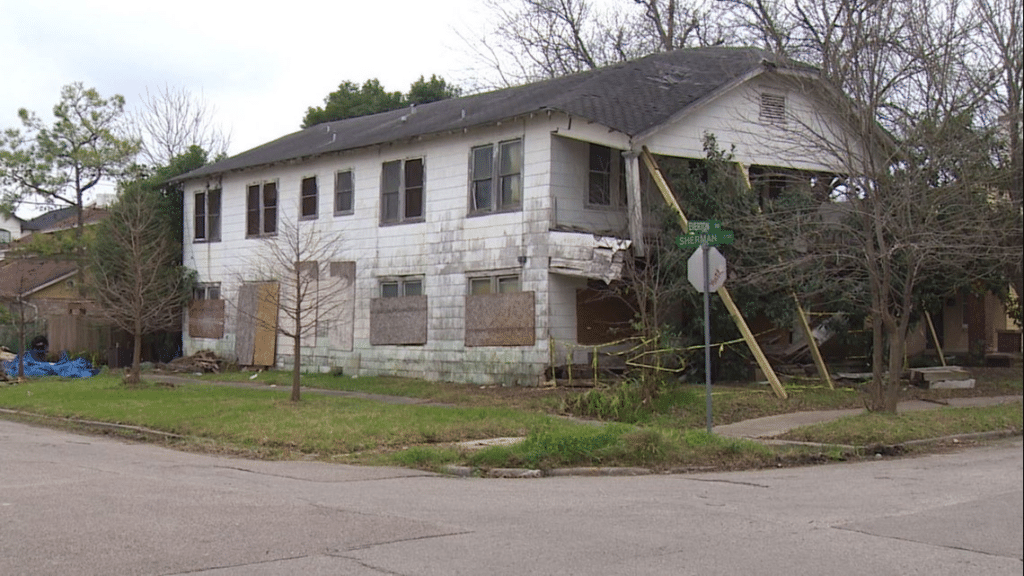
Crime rates—particularly theft—remain high, even as chic cafes open next to boarded-up laundromats. Environmental issues also plague the area due to nearby industrial zones. While cultural pride burns bright in its murals and mariachi festivals, many longtime residents feel pushed out, priced out, or ignored.
#35: Southwest – Atlanta, GA
Far from Atlanta’s glitzy skyline, the Southwest district often fades into invisibility. Strip malls dot the roads, punctuated by payday lenders and pawn shops. Crime is persistent, and some neighborhoods here suffer homicide rates among the highest in the state.

Transit is lacking, leaving residents isolated without cars. Schools? Often forgotten in budget meetings. Yet this part of the city also hosts influential community leaders and historic churches. There’s grit here—a refusal to be erased. But without investment, Southwest Atlanta risks becoming a cautionary tale rather than a comeback story.
#34: South Side – Milwaukee, WI
This isn’t the Milwaukee of beer tours and baseball games. The South Side tells a more harrowing tale: aging housing stock, lead pipes, and underemployment form a trio of trouble. Latino families dominate the population here, packed into neighborhoods teetering between survival and slide.
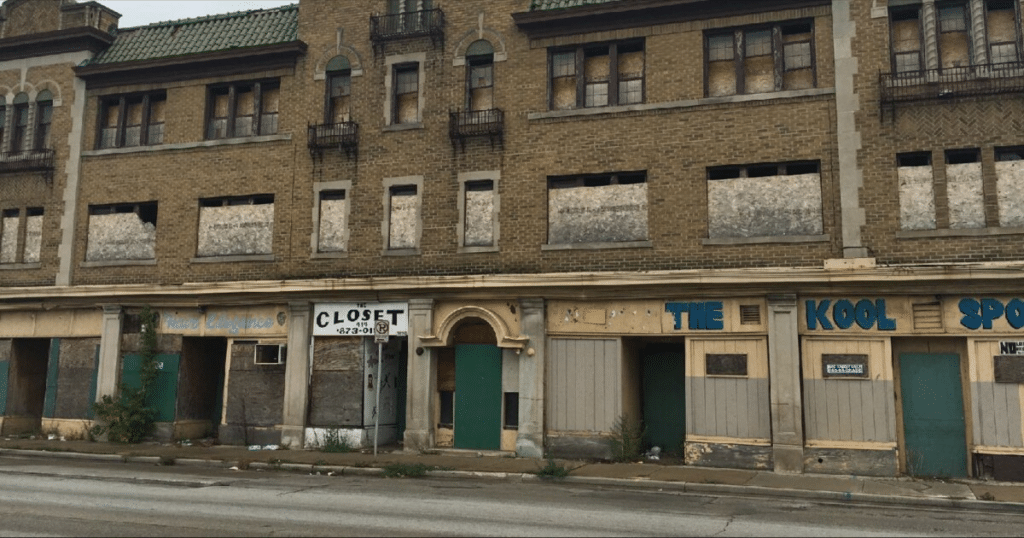
Police presence is constant; so are community barbecues and bilingual church services. Public education is under strain, and economic mobility feels stagnant. But you’ll notice how much life happens anyway—how fiercely people plant roots where few others would.
#33: North Side – St. Louis, MO
Abandonment defines much of the North Side. Drive through, and you’ll spot elegant brick homes now riddled with broken windows and ivy. It was once prosperous, then came white flight, redlining, and economic collapse. Crime is high; hope feels rationed.
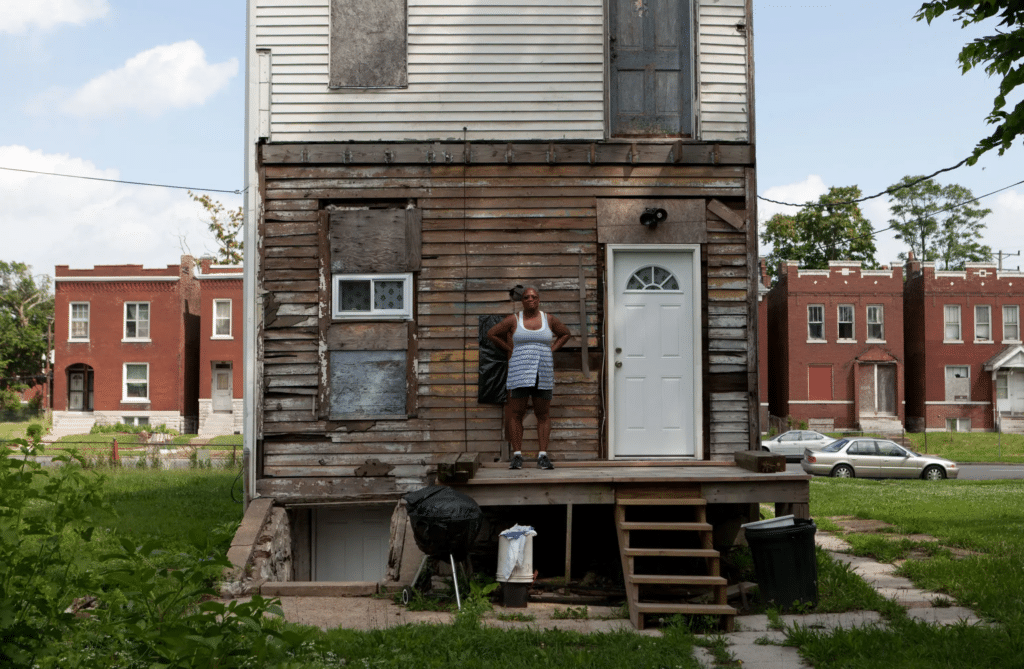
Streets crumble, bus routes vanish, and public services limp along. The residents, mostly Black, are accustomed to promises that never land. Still, churches open every Sunday, barbershops hum, and activists keep showing up. This part of St. Louis is not just underserved—it’s misunderstood.
#32: Southwest – Baltimore, MD
Battered but not bowed, Southwest Baltimore wears its cracks like battle scars. Row homes sag under decades of weather and wear, while corner stores are last-resort lifelines. Here, crime isn’t just a stat—it’s ambient. Murders, carjackings, and drug activity persist despite police presence.
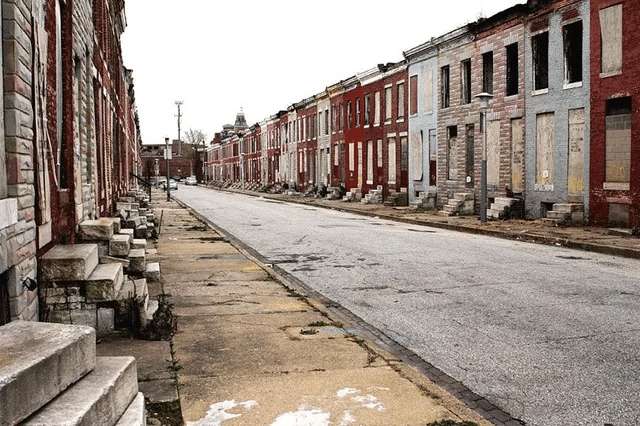
Schools are under siege, not just from funding cuts but from systemic fatigue. Yet there’s music on the stoops and hope in community halls. This neighborhood bleeds perseverance. If you blink, you’ll miss the beauty—but if you stay, you’ll feel the weight of a place fighting every day to be seen.
#31: East Side – San Antonio, TX
East Side San Antonio doesn’t just struggle—it smolders under a complicated history of neglect. While nearby areas flourish with trendy bars and renovated lofts, this neighborhood grapples with generational poverty and one of the city’s highest violent crime rates.
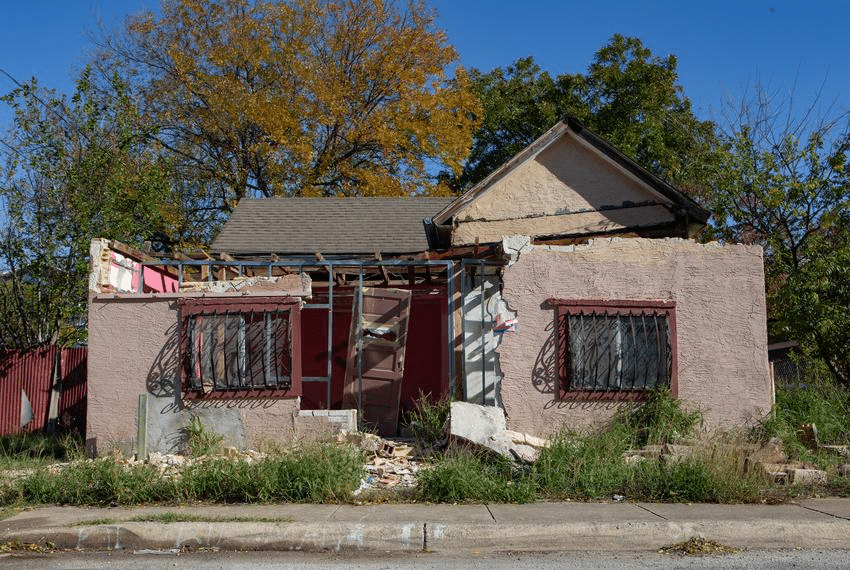
Many homes are passed down through families, yet few have seen real maintenance in decades. Schools are under-resourced, and youth programs are scarce. The community is tight-knit, fiercely loyal, but worn thin. You’ll find resilience in barbecue joints, block parties, and sorrow in abandoned lots and whispered tragedies.
#30: Central – Fresno, CA
If ever there was a neighborhood that symbolized a city’s growing pains, it’s Central Fresno. This working-class area is squeezed by poverty, homelessness, and gang violence.

While it doesn’t often make national headlines, those who live here know the struggle intimately: unreliable public transit, overcrowded rentals, shuttered storefronts. The heat is oppressive in summer, but the heat of social frustration burns longer.
#29: North Lawndale – Chicago, IL
North Lawndale’s history is a blueprint of how cities abandon Black communities. Once a bustling Jewish neighborhood, it became predominantly African-American in the mid-20th century, and then the jobs and banks vanished.

Today, violent crime remains among the highest in Chicago, and one-third of properties sit vacant. Still, 30,000 residents remain, many deeply engaged in revitalization. Green spaces are returning, youth arts programs are thriving, and murals color brick walls with resistance.
#28: Southwest – Detroit, MI
Unlike its flashier downtown sibling, Detroit’s southwest side lies in the shadows, gritty, diverse, and overlooked. Known for its large Latino population, the area bursts with culture, yet buckles under economic strain.

Streets show signs of neglect, and crime, especially gang-related, plagues certain blocks. Despite this, local taquerias, community centers, and murals breathe color into the gray. For many, life here is marked by hard work and guarded optimism.
#27: Roseland – Chicago, IL
In Roseland, you’ll see murals of hope painted on walls crumbling from neglect. Once envisioned as a blue-collar dream, today it’s a South Side neighborhood burdened by high homicide rates, vacant lots, and food deserts.
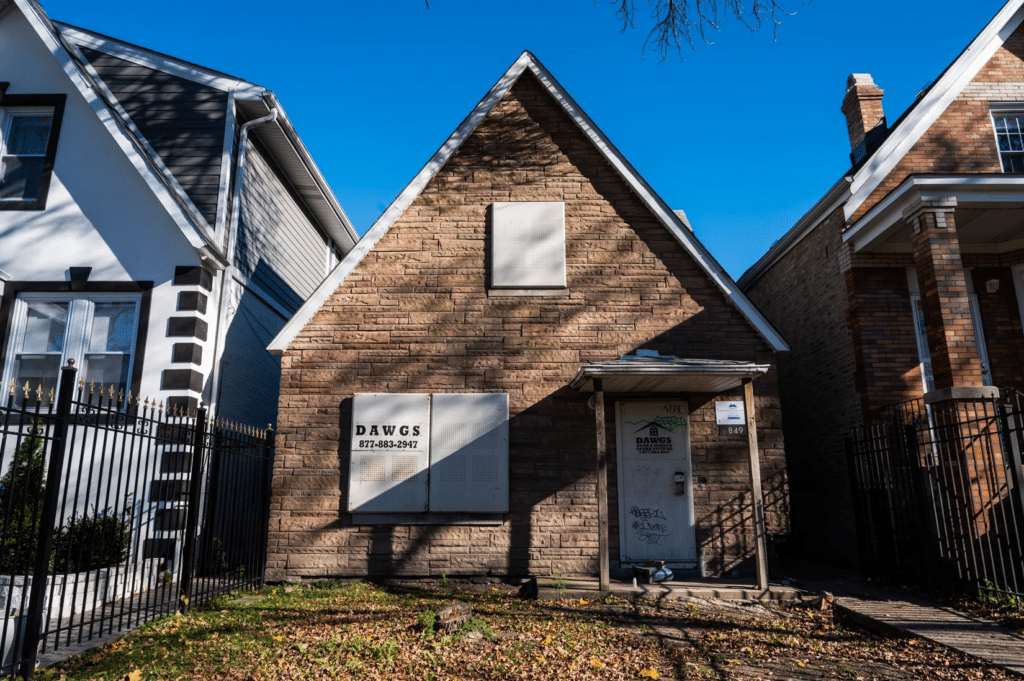
Nearly 44% of children live below the poverty line. Generations of families still call Roseland home, but daily life often requires endurance—navigating failing schools, dodging violence, and coping with systemic disrepair. Still, the soul of the neighborhood hasn’t vanished.
#26: East Cleveland – Cuyahoga County, OH
Blink, and you’ll miss it—but East Cleveland’s troubles are hard to ignore. Once affluent, now one of Ohio’s most distressed suburbs, it’s become synonymous with abandonment. With fewer than 14,000 residents, the city has widespread vacancies, failing utilities, and crumbling infrastructure.

Police response times are long; fire services are underfunded. Residents feel left behind, a feeling magnified by the affluence of nearby Cleveland Heights. Hope flickers in community programs and youth centers, but the challenges—poor schools, high unemployment, deep-rooted mistrust—demand more than grassroots energy.
#25: South Side – Chicago, IL
To say the “South Side” paints a broad brush is an understatement—this vast Chicago region includes many suffering neighborhoods. Roseland, Greater Grand Crossing, and others face unemployment, disrepair, and gun violence.

Still, over half a million people live here, with stories as diverse as the blocks they inhabit. It’s not all bleak—some areas have seen reinvestment—but the legacy of segregation, redlining, and urban divestment is hard to ignore. Here, resilience is part of the DNA, but so is caution.
#24: Central City – New Orleans, LA
Central City wears its trauma in plain sight. After Hurricane Katrina, recovery here lagged while other neighborhoods rebuilt. Nearly 13,000 people live within its aging shotgun houses and public housing complexes.
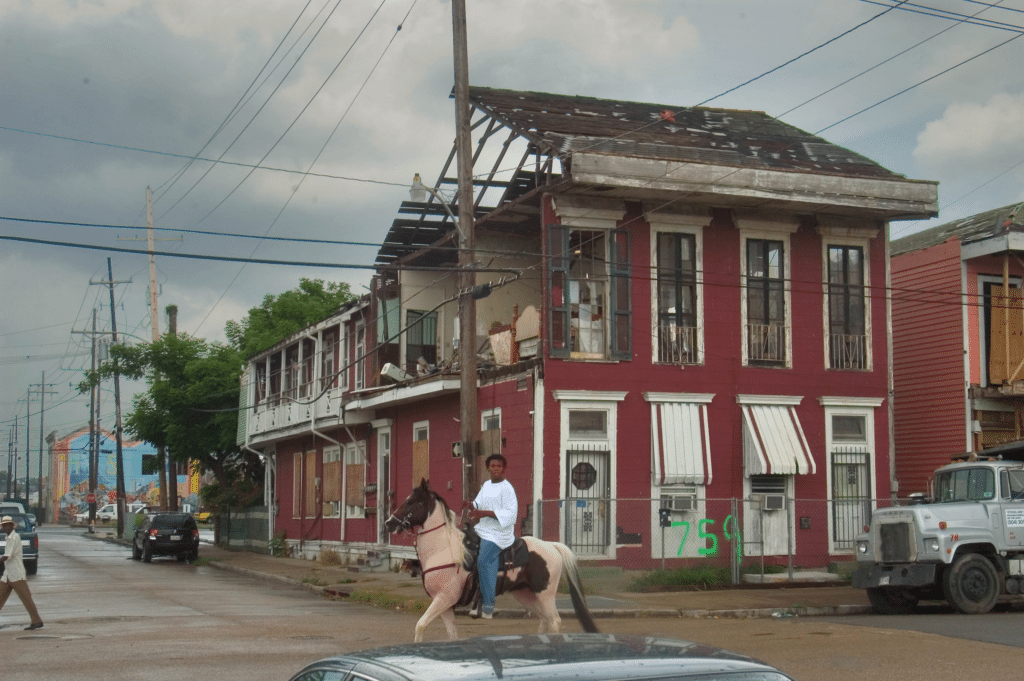
Crime—including murder—remains disproportionately high. Education and employment prospects lag behind city averages. Yet resilience is everywhere: second-line parades twist down the street, Creole cuisine pours from corner kitchens, and jazz echoes from bars that never close.
#23: Broadway-Fillmore – Buffalo, NY
Step into Broadway-Fillmore, and the echoes of Buffalo’s golden era are deafening. Once a Polish-American stronghold, the neighborhood now contends with staggering vacancy rates and generational poverty.

Around 7,000 residents navigate a landscape of boarded-up businesses and failing infrastructure. Crime here isn’t explosive—it’s chronic: petty theft, break-ins, drug activity. What remains are vestiges of cultural pride: historic churches, Kielbasa shops, and community gardens clinging to relevance.
#22: South Park – Houston, TX
Few places in Houston tell as many conflicting stories as South Park. Crime stats are high—robbery, drug offenses, and shootings are frequent. Yet block parties erupt on weekends, gospel blares from storefront churches, and neighbors know each other by name.

About 20,000 residents live in a patchwork of aging homes and fast-food joints, bracketed by overgrown lots and crumbling roads. Schools are underfunded, and job prospects are limited. South Park’s energy is restless—alive, but wary.
#21: West End – Atlanta, GA
Imagine architectural charm colliding with socioeconomic hardship—welcome to the West End. Victorian homes stand proud, but many crumble under years of neglect. Once a thriving middle-class hub, the neighborhood teeters between revitalization and ruin.
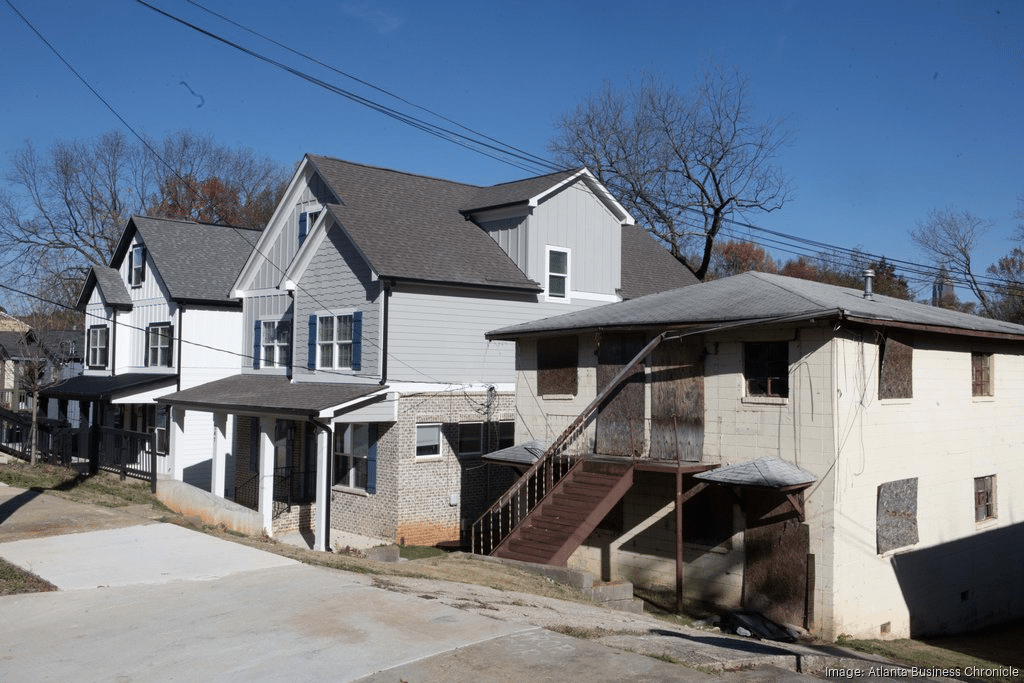
Crime—especially theft and assault—rattles nerves, while residents face gentrification on one side and poverty on the other. About 22,000 people live here, most enduring a tug-of-war between cultural preservation and commercial encroachment.
#20: South Deering – Chicago, IL
South Deering isn’t bustling—it’s brooding. Situated on Chicago’s far Southeast Side, this heavily industrialized neighborhood has just over 4,000 residents and a reputation shaped by steel mills and pollution.
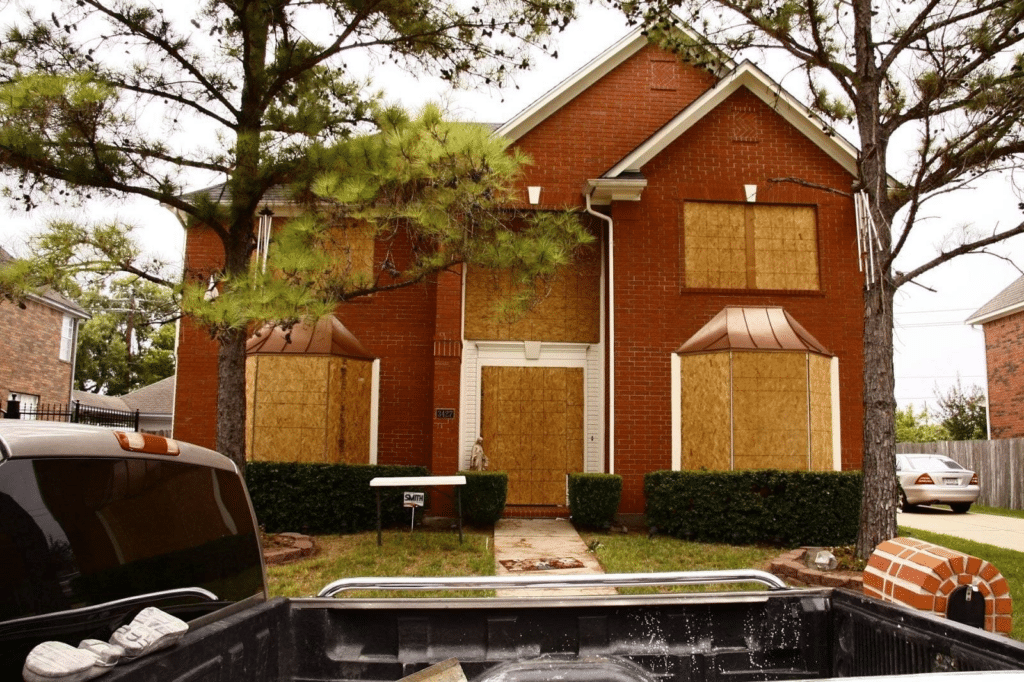
Empty lots stretch endlessly between factory buildings and train tracks. It’s one of the most sparsely populated neighborhoods in the city, yet those who remain face above-average crime, poor air quality, and few amenities. Public transit is scarce. Groceries? Miles away.
#19: Orange Mound – Memphis, TN
Orange Mound has soul. It also has scars. One of the oldest African-American neighborhoods in the U.S., it brims with history and pride—but also the wounds of disinvestment and crime. Gunfire is a nightly reality for some.
Many businesses have shuttered, leaving residents with few food, healthcare, or economic mobility options. But it’s also a place of defiance: block parties, backyard barbecues, and murals speak to a community unwilling to surrender its legacy.
#18: Penn Hills – Pittsburgh, PA
Suburban sprawl meets post-industrial fatigue in Penn Hills, once a middle-class haven outside Pittsburgh. Aging infrastructure—especially water and sewer lines—has become a burden for its roughly 40,000 residents.
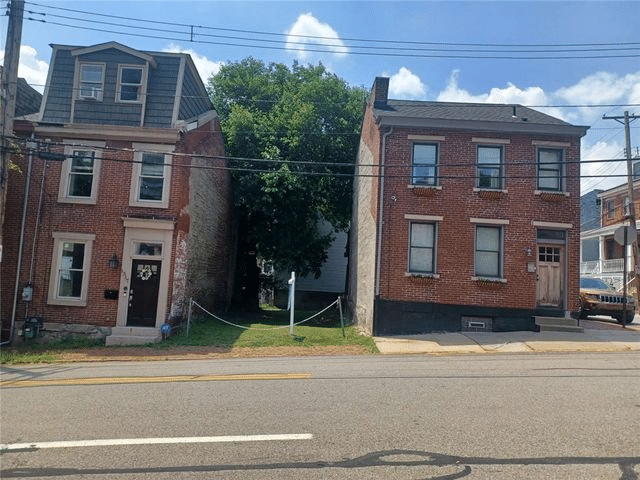
Home values have stagnated, schools are under pressure, and crime, while not rampant, has ticked up. It’s a place teetering between nostalgia and neglect. The town’s charm hasn’t disappeared entirely: tree-lined streets and modest homes remain, but deferred maintenance and population loss now define much of the landscape.
#17: Fordham Heights – Bronx, NY
This pocket of the Bronx hums with energy and tension. Fordham Heights is densely populated—over 70,000 people crammed into walk-ups and public housing with little room to breathe. Violent crime remains a genuine concern, particularly muggings and shootings.
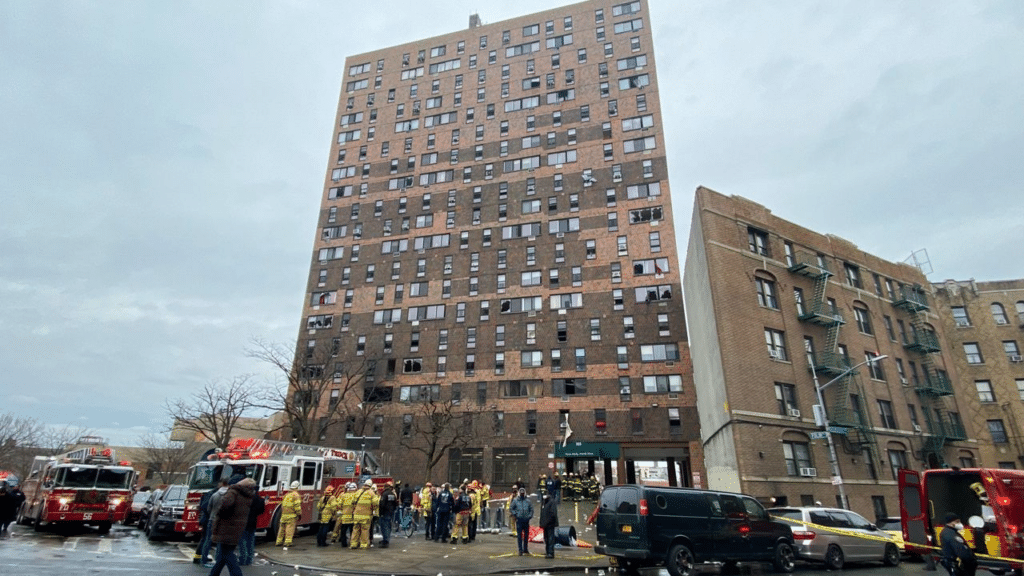
Rent isn’t cheap, either, despite crumbling infrastructure and spotty services. But culture pulses through the blocks: bodegas blare bachata, teens freestyle on stoops, and street vendors feed crowds outside Fordham Plaza. It’s alive, no doubt.
#16: Skid Row – Los Angeles, CA
It’s not a neighborhood in the traditional sense, but Skid Row demands inclusion. More than 4,000 unhoused people live in this 50-block area of downtown Los Angeles. Tents line the sidewalks. Human suffering is visible, constant, and largely unaddressed.
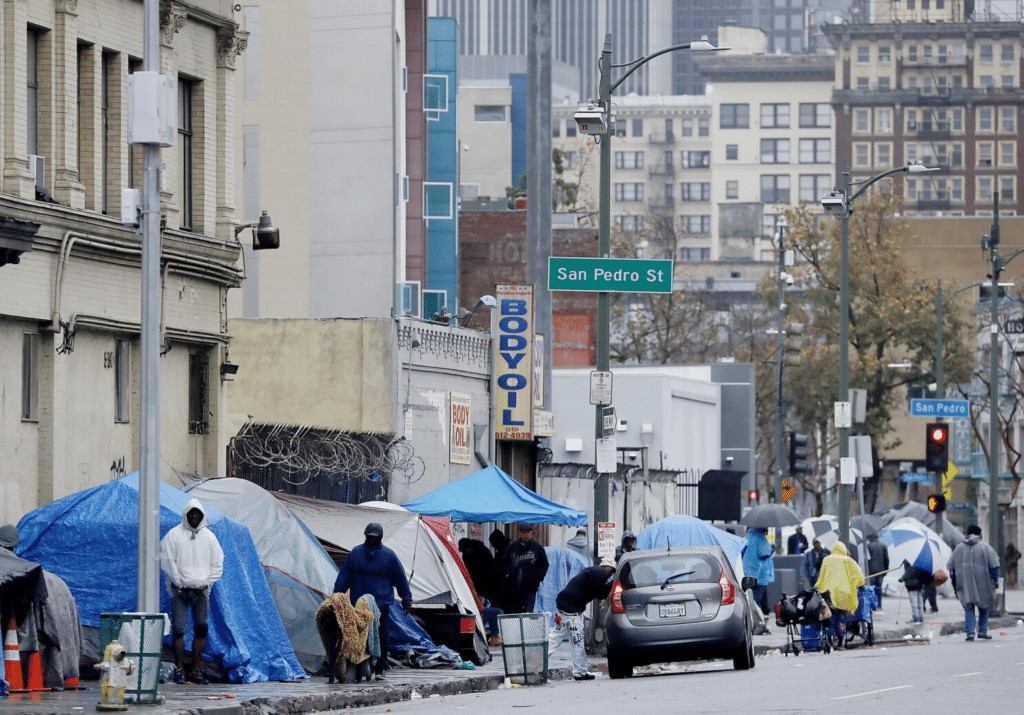
Despite being blocks from skyscrapers, basic sanitation and safety are luxuries. Services exist—shelters, outreach, clinics—but rarely enough. The city’s response oscillates between neglect and force. Still, there’s a community amid the chaos: rules, leaders, mutual care.
#15: Quigley Park – Albuquerque, NM
Tucked into central Albuquerque, Quigley Park feels like a place that has lost its pulse. Crime runs rampant, particularly burglary and assault, while businesses struggle to stay afloat. Homes here are modest, some in visible disrepair, and the streets carry an air of fatigue.

Its location makes it notable; it sits in the middle of a growing city, yet feels worlds apart. Youth programs are underfunded, and addiction rates strain the already limited social services. The people are resilient, but even that has limits when investment continues to bypass their streets.
#14: Overtown – Miami, FL
Walk a few blocks from gleaming downtown towers, and you’ll hit Overtown—a neighborhood forgotten in the shadow of skyscrapers. Miami’s “Harlem of the South” once teemed with Black-owned businesses and music halls.
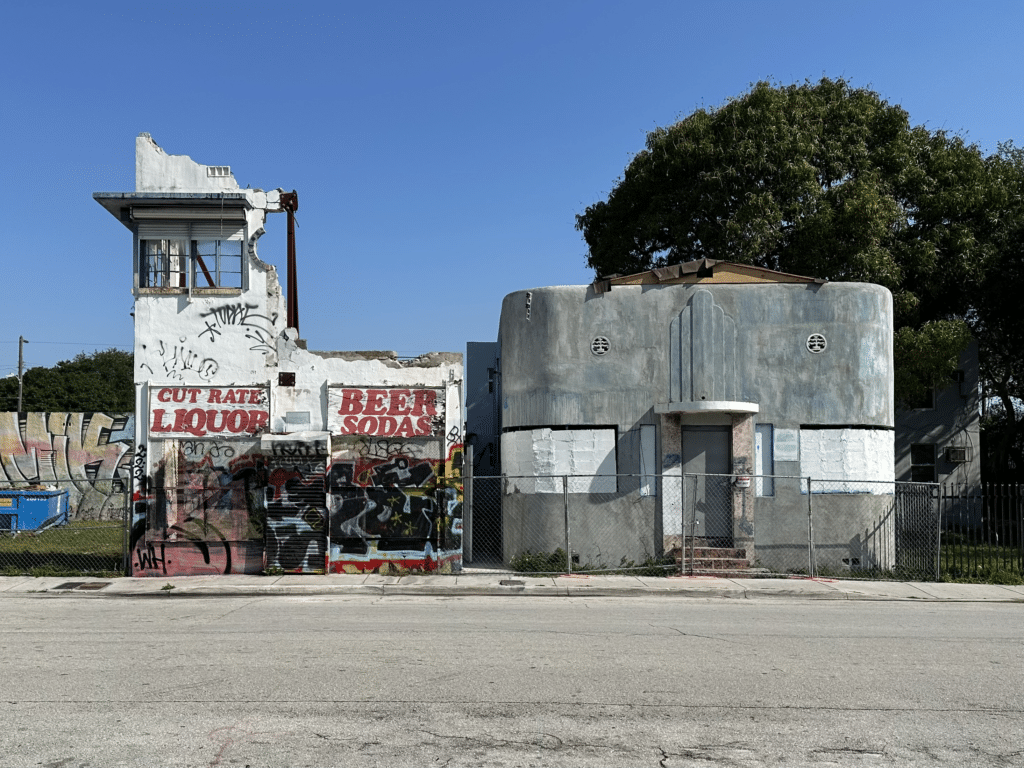
Then came highways that sliced through its heart. Today, crime and gentrification tug at it from both sides. Many residents, living under the poverty line, face daily uncertainty: rent spikes, food insecurity, and gun violence. Tourists zip past on Brightline trains while longtime locals fear eviction.
#13: Sandtown-Winchester – Baltimore, MD
Few neighborhoods have borne as much scrutiny as Sandtown-Winchester. Made infamous by the 2015 death of Freddie Gray, this Baltimore enclave of roughly 9,000 residents was once the epicenter of Black arts and business.
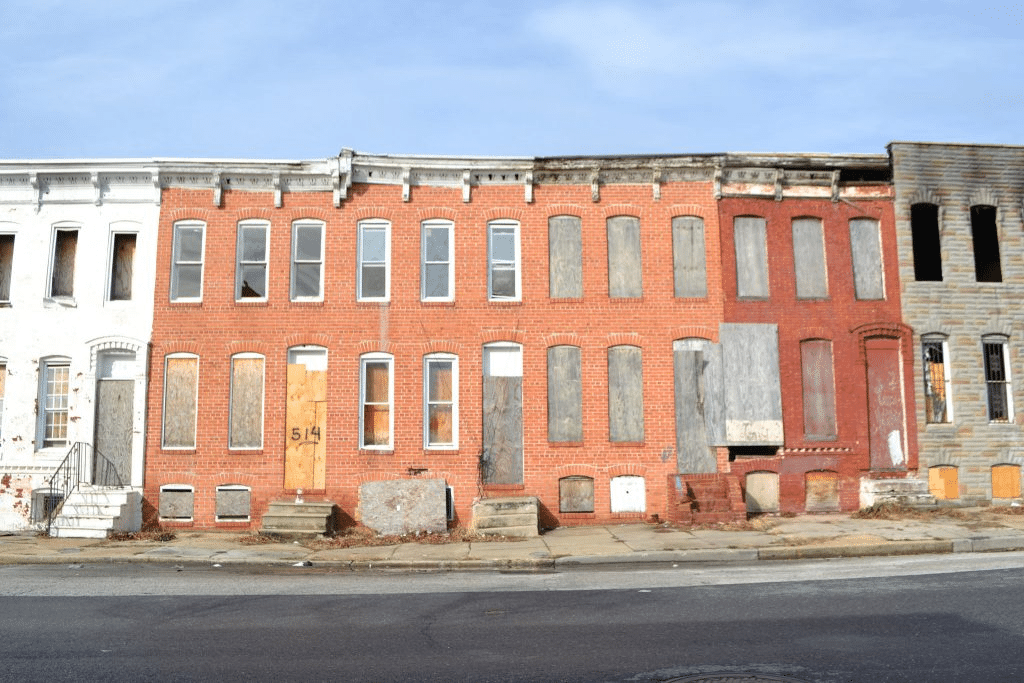
But decades of redlining, disinvestment, and mass incarceration have left scars. Vacant row houses outnumber occupied ones, and gun violence still mars daily life. The median household income hovers far below the national average.
#12: International District – Albuquerque, NM
Not long ago, this was called “the Southeast Heights.” Today, many know it as “The War Zone.” The International District of Albuquerque, with its diverse population and immigrant-heavy communities, has become synonymous with violence and drug trafficking.
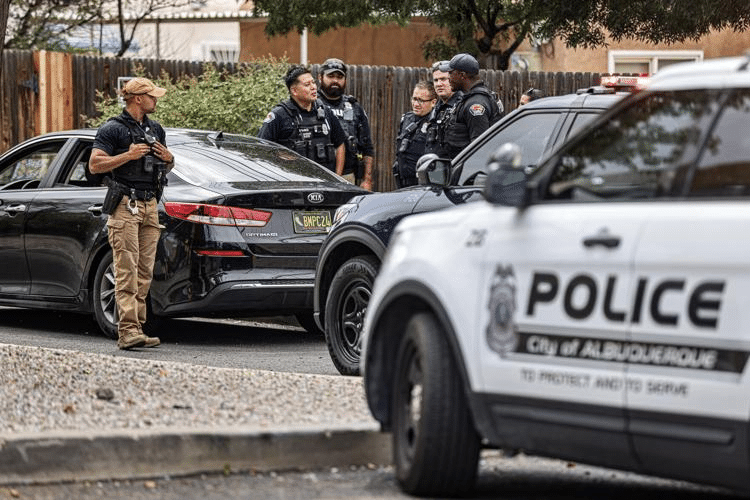
Dilapidated apartment complexes, abandoned lots, and neglected infrastructure add to the unease. Residents—many of whom speak languages other than English at home—face significant barriers to upward mobility. It’s a neighborhood affluent in cultural potential but underserved by policy.
#11: Fifth Ward – Houston, TX
You won’t find Fifth Ward on a postcard, but it leaves an impression. This historically Black neighborhood northeast of downtown Houston is drenched in culture—and grief. Once nicknamed “The Nickel,” it’s been shaped by jazz legends, racial segregation, and environmental injustice.

Over time, disinvestment set in: underperforming schools, food deserts, and industrial pollution became part of daily life. Crime remains a concern, particularly violent incidents. Despite these obstacles, many residents display remarkable pride and creativity, often drawing on rich musical and political roots.
#10: Gary – Lake County, IN
Steel built Gary. Steel also broke it. When mills shuttered and jobs vanished, Gary’s population plummeted from 180,000 to under 70,000. What remains is a ghost of American industry—abandoned homes, shuttered schools, and a crime rate three times the national average.
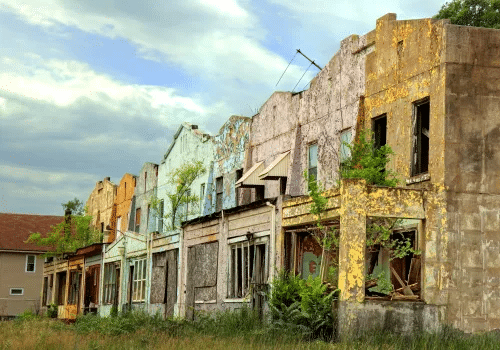
Public services struggle to meet even basic needs. Yet even here, defiance blooms: artists paint decayed facades, teachers mentor against all odds, and residents refuse to give up on the idea of home. Gary is more than ruined. It’s a broken backbone with a stubborn heartbeat.

